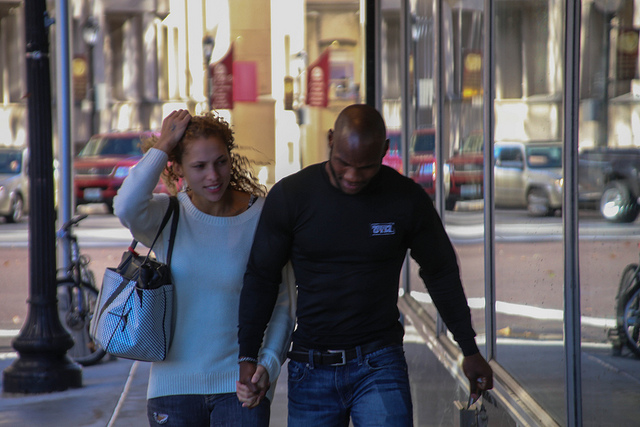When we hear the word “racist,” certain images come to mind.
But racism goes beyond the stereotypical image of the Southern guy with a shaved head and “White Pride” tattooed across his shoulders. You know, the one who drives around with KC HiLiTES, a Confederate flag bumper sticker on his jacked-up truck, and tosses empty beer cans out of the window.
It even goes deeper than the memory of our grandfather sitting on the back porch observing our friend. “You know, that Jap is pretty good on the trampoline,” he complimented, failing to realize that not only was the term Jap offensive, but the girl’s name was Ling, and her parents were from China.
No matter the stereotype our mind selects, it’s the “other” people who are racist. Us, however—we’re open-minded, we see that Black Lives Matter, and we donate money to help refugees from the Middle East.
Recently, someone told me only 20 percent of the country is racist. That’s right, he thinks that 80 percent of us are good guys.
I disagree, because I can see racism in myself…and I can make a strong case for not being racist.
My great-grandparents are Syrian. I worked with a mixed-race guy for four months before realizing that he was mostly black. I knew he looked a little different, but it never occurred to me to wonder about his background. I went to an elementary school where I was the only white female in my class. I’ve dated four guys in my lifetime, two who grew up Catholic and two who grew up Muslim, and only one was originally from the United States.
Despite all this, I still recognize my own racism.
For example, when my boyfriend from the Middle East suggested we get serious, I internally stressed because I kept imagining the 1991 Sally Field movie in which her Iranian husband turned abusive when they moved to his home country.
And then I thought: If I am racist, then everyone else probably is too.
Alright, before you start furiously typing a counter-argument, I’ll agree that perhaps “racist” is too strong of a word. But we do have our unconscious biases.
However, my opinion matters little unless we have the research to back it up. So, here we go.
The University of Washington, University of Virginia, Harvard University, and Yale University, along with independent researchers, participate in the Implicit Association Test (IAT).
In a very simplistic summarization, the IAT measures how fast we associate words like friend, fabulous, happy, smiling, enjoy, excellent, glorious, and joyful with white versus black. For most of us, the first time through the test, we associate these words to white twice as fast as we can do black. Conversely, we associate words such as hate, nasty, negative, yucky, annoy, sadness, dirty, and detest much more quickly with black.
While imperfect, the research is clear on one thing: It takes time and effort to overcome our unconscious biases.
These prejudices apply to almost all of the population, rather than just the worst 20 percent. The predispositions also apply to more than just race and include sexuality, gender, and weight, among others.
Dr. Mahzarin Banaji explains her research in more detail in this video:
If interested, we can test ourselves on Harvard’s website here.
Now we ask ourselves, if we all have these unconscious biases, how do we fix them?
We fix them by making them conscious, and then we practice pushing through them. I wrote about overcoming my own bias regarding sexuality, so I know this works.
We fix them by having the difficult conversation with our significant other, explaining why a movie from 1991 is causing us to push back against the relationship, and working together to figure out how to fix it. Then, when the relationship doesn’t work out, we know it’s for reasons other than race, culture, or religion.
We fix them by supporting Black Lives Matter. We support the movement not because black lives matter more than white or blue (or any other color) lives, because all lives do matter. Rather, we support it because we are now aware of our bias against black, and so we allow for extra attention and extra time to shine consciousness onto the previously unconscious partiality.
We fix it by putting ourselves in uncomfortable, but still safe situations. For example, maybe we go to a primarily black church until we no longer notice the difference between us and them. We keep going until it’s no longer uncomfortable. We keep going until we belong equally. We keep going until it’s our church just as much as it is theirs.
It gets better with practice. And we fix it because we keep making ourselves uncomfortable until the time it takes us to associate the word friend to white is nearly identical to the time it takes us to associate the word friend to black.
We keep making ourselves uncomfortable until, as a society, at least 80 percent of us are consciously working to be the good guys.
~
Relephant:
If you Know you aren’t Racist, watch this Blue-Eyed, Brown-Eyed Test.
~
Author: Kari Zahar
Image: Paul Sableman/Flickr
Editor: Catherine Monkman
Copy Editor: Leah Sugerman
Social Editor: Khara-Jade Warren







Read 1 comment and reply